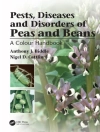In nature, microorganisms are generally found attached to surfaces as biofilms such as dust, insects, plants, animals and rocks, rather than suspended in solution. Once a biofilm is developed, other microorganisms are free to attach and benefit from this microbial community. The food industry, which has a rich supply of nutrients, solid surfaces, and raw materials constantly entering and moving through the facility, is an ideal environment for biofilm development, which can potentially protect food pathogens from sanitizers and result in the spread of foodborne illness.
Biofilms in the Food Environment is designed to provide researchers in academia, federal research labs, and industry with an understanding of the impact, control, and hurdles of biofilms in the food environment. Key to biofilm control is an understanding of its development. The goal of this 2nd edition is to expand and complement the topics presented in the original book. Readers will find:
* The first comprehensive review of biofilm development by Campylobacter jejuni
* An up-date on the resistance of Listeria monocytogenes to sanitizing agents, which continues to be a major concern to the food industry
* An account of biofilms associated with various food groups such as dairy, meat, vegetables and fruit is of global concern
* A description of two novel methods to control biofilms in the food environment: bio-nanoparticle technology and bacteriophage
Biofilms are not always a problem: sometimes they even desirable. In the human gut they are essential to our survival and provide access to some key nutrients from the food we consume. The authors provide up-date information on the use of biofilms for the production of value-added products via microbial fermentations.
Biofilms cannot be ignored when addressing a foodborne outbreak. All the authors for each chapter are experts in their field of research. The Editors hope is that this second edition will provide the bases and understanding for much needed future research in the critical area of Biofilm in Food Environment .
表中的内容
List of contributors ix
Preface xii
1 Current Knowledge and Perspectives on Biofilm Formation and Remediation 1
Lynne A. Mc Landsborough
2 Biofilm Development by Campylobacter jejuni 29
Kidon Sung and Saeed Khan
3 Resistance of LISTERIA MONOCYTO GENES Biofilms to Sanitizing Agents 51
Reha O. Azizoglu, Vikrant Dutta, Fred Breidt, Jr., and Sophia Kathariou
4 Prevention and Control of Biofilms in the Food Industry and Bio?]Nanotechnology Approaches 84
Eric Birkenhauer and Suresh Neethirajan
5 Use of Bacteriophages to Remove Biofilms of Listeria monocytogenes and other Foodborne Bacterial Pathogens in the Food Environment 131
Ramakrishna Nannapaneni and Kamlesh A. Soni
6 Ability of Foodborne Bacterial Pathogens to Attach to Meat and Meat Contact Surfaces 145
Efstathios Giaouris
7 Biofilms in Fresh Vegetables and Fruits 176
Michelle Qiu Carter and Maria T. Brandl
8 Biofilms in Dairy Products and Dairy Processing Equipment and Control Strategies 205
Xinmiao Wang, Ali Demirci and Virendra M. Puri
9 Human Intestinal Microbial Biofilm and its Correlation with Intestinal Mucin Secretion 236
Katherine Williams, Aschalew Z. Bekele, Kuppan Gokulan, and Sangeeta Khare
10 Applications of Biofilm Reactors for Production of Value?]Added Products by Microbial Fermentation 255
Duygu Ercan, Thunyarat Pongtharangkul, Ali Demirci, and Anthony L. Pometto, III
Index 000
关于作者
Anthony L. Pometto III, Ph.D., Professor, Department of Food, Nutrition, and Packaging Sciences, Clemson University, Clemson, South Carolina, USA.
Ali Demirci, Ph.D., Professor, Department of Agriculture and Biological Engineering, The Pennsylvania State University, University Park, Pennsylvania, USA.












